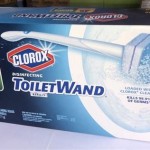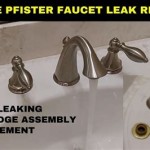Removing Rust From a Cast Iron Bathtub
Rust on a cast iron bathtub is a common problem, especially in older homes. While unsightly, it can often be addressed with the right techniques and products. Understanding the nature of rust and the properties of cast iron is essential for choosing the most effective and safest removal method. Aggressive treatments can damage the porcelain enamel coating that is typically found on these bathtubs, so a careful and informed approach is paramount.
Cast iron bathtubs are durable and retain heat exceptionally well, making them a desirable feature in many bathrooms. However, the underlying cast iron is susceptible to rust when the protective enamel coating is compromised. This damage can occur due to impacts, scratches, or the gradual erosion of the enamel over time. Water, particularly hard water with a high mineral content, accelerates the rusting process by providing the necessary elements for oxidation.
Prior to undertaking any rust removal process, it is crucial to identify the extent of the problem. Minor surface rust might be treatable with gentler methods, while deep-seated rust may require more aggressive solutions or professional restoration.
Assessing the Rust Damage
Before attempting to remove rust, a thorough assessment of the affected area is necessary. This involves carefully examining the surface to determine the severity and extent of the rust. Light surface rust typically presents as a reddish-brown discoloration and can often be removed with mild abrasives. Deeper rust penetration, characterized by pitting or flaking, signifies more significant damage that may require more intensive treatments.
The condition of the surrounding enamel should also be evaluated. If the enamel is already chipped or cracked, the rust removal process may further damage it. In such cases, it may be beneficial to consider professional refinishing options, which involve repairing the enamel and applying a new protective coating. Attempts to remove rust from heavily damaged enamel could lead to further degradation, ultimately requiring extensive restoration work.
Documenting the condition of the bathtub with photographs before starting the rust removal process can be helpful. This provides a visual record of the initial state and allows for a more accurate comparison after treatment, aiding in the assessment of the effectiveness of the chosen method. It can also be useful when consulting with professionals if the rust problem proves too challenging to handle independently.
Gentle Rust Removal Methods
For minor surface rust, gentle methods are often the most effective and least damaging to the bathtub's enamel. These techniques typically involve using non-abrasive cleaners and soft scrubbing tools.
One common approach involves using a paste made from baking soda and water. Baking soda is a mild abrasive that can help to lift surface rust without scratching the enamel. The paste should be applied to the affected area and allowed to sit for 30 minutes to an hour. After the soaking period, the paste should be gently scrubbed with a soft sponge or cloth. Rinsing thoroughly with water is essential to remove any remaining baking soda residue.
Another option is to use white vinegar. Vinegar's acidity helps to dissolve rust. A solution of equal parts white vinegar and water can be sprayed onto the rust and allowed to sit for several hours, or even overnight. After soaking, the area should be scrubbed gently with a non-abrasive pad and rinsed thoroughly. The vinegar smell can be strong, so adequate ventilation is recommended.
A commercially available rust stain remover specifically designed for bathroom surfaces can also be used. These products typically contain mild acids or chelating agents that dissolve rust. It is crucial to follow the manufacturer's instructions carefully and test the product in an inconspicuous area before applying it to the entire affected surface. Protective gloves and eye protection should be worn when using these products.
Regardless of the method chosen, it is important to avoid using abrasive cleaning tools such as steel wool or scouring pads, as these can scratch and damage the enamel coating. Gentle scrubbing with a soft sponge or cloth is always preferred. After cleaning, the bathtub should be thoroughly rinsed and dried to prevent further rust formation.
Stronger Rust Removal Techniques
When gentle methods prove insufficient, stronger techniques may be necessary to remove stubborn rust. However, it is crucial to exercise caution when using these methods, as they can potentially damage the enamel coating if not applied carefully.
One option is to use a commercially available rust remover specifically designed for cast iron. These products typically contain stronger acids or chelating agents that effectively dissolve rust. It is imperative to follow the manufacturer's instructions precisely and to wear appropriate personal protective equipment, including gloves and eye protection. These products should be tested in an inconspicuous area before being applied to the entire affected surface.
Another approach is to use a pumice stone. Pumice stones are mildly abrasive and can be effective at removing rust, but they can also scratch the enamel if used improperly. The stone should be used wet and applied with gentle pressure. It is important to avoid scrubbing too vigorously and to frequently rinse the area to remove any abrasive particles. Pumice stones are best suited for localized areas of rust and should be used with extreme caution.
For particularly stubborn rust, a rust converter can be used. Rust converters chemically convert the iron oxide into a stable compound, preventing further corrosion. These products are typically applied to the rusted area and allowed to dry. Once dry, the treated area can be painted or coated to provide additional protection. It is crucial to follow the manufacturer's instructions carefully and to prepare the surface properly before applying the converter.
In situations where the rust is deep-seated and widespread, professional refinishing may be the most viable option. Refinishing involves repairing any damaged enamel, removing the rust, and applying a new protective coating. This can restore the bathtub to its original condition and extend its lifespan. While refinishing can be more expensive than DIY rust removal methods, it can provide a long-lasting and aesthetically pleasing solution.
After using any stronger rust removal technique, thorough rinsing and drying are essential. A protective coating, such as a bathtub wax or sealant, can be applied to help prevent future rust formation.
Ultimately, the best approach to removing rust from a cast iron bathtub depends on the severity of the rust, the condition of the enamel, and the individual's comfort level with different techniques. Starting with gentle methods and progressing to stronger techniques as needed, while always prioritizing the preservation of the enamel coating, is generally recommended.

How To Refinish An Old Clawfoot Bath Tub

How Pro S Fix Rust On A Cast Iron Tub Bathtub Reglazing Refinishing

Re A Cast Iron Bath Tub Enamel Rer Kit Diy Know How

How To Refinish An Old Clawfoot Bath Tub

Is Cast Iron Tub Refinishing A Viable Choice America Pros

How To Refurbish A Cast Iron Tub This Old House

How To Fix The Enamel On A Bathtub Stop Rust Formation

Iron Out Rust Stain Remover Powder

How To Refinish A Cast Iron Bathtub The Vanderveen House

Tri Cities Tn Bathtub Rust Hole Repair Miraculous Makeovers Drain Tricities Refinishing
Related Posts








